Burlington, VT — COMSOL, Inc. announces the release of the Plasma Module. Based on COMSOL Multiphysics, the Plasma Module brings easy-to-use tools for the study of low temperature plasmas. The module is designed for researchers, engineers and experimentalists in the field of plasma science to model non-equilibrium discharges which occur in a wide range of engineering disciplines. Target application areas utilizing plasmas include light sources, semiconductor processes, surface coating, and medical sterilization. The module is accompanied by a suite of tutorial and industrially relevant models which serve as both instructional examples and a foundation for future work.
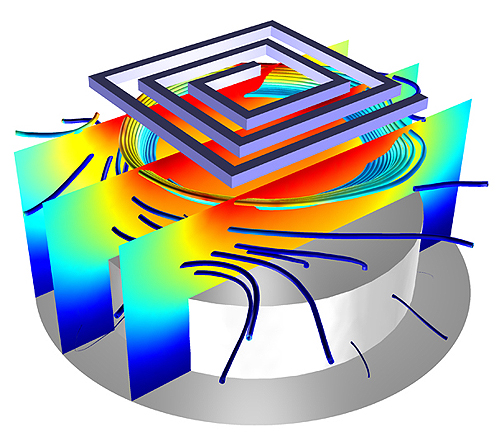
This image, created using the COMSOL Multiphysics Plasma Module, shows the electron temperature inside an Argon ICP reactor used for the fabrication of semiconductor devices.
“Simulation of plasmas is a daunting task that is now being addressed for the first time ever using true multiphysics technology,” comments Dan Smith, Lead Developer of the Plasma Module with COMSOL, Inc. “We leverage this technology in the Plasma Module to solve the complex interaction between the electromagnetic fields and charged particles which collectively constitutes plasma. Users will be able to turn to simulation for a wide range of plasma applications that will reduce the need for costly experiments and increase productivity. ”
Specialized Plasma Modeling Interfaces
Low temperature plasmas represent the amalgamation of fluid mechanics, reaction engineering, physical kinetics, heat transfer, mass transfer and electromagnetics. The net result is a true multiphysics problem involving advanced couplings between the different physics. The Plasma Module features application-specific physics interfaces that automatically implements the complicated coupling between each of the components which make up plasma.
There are specialized modeling interfaces for the most common types of plasma reactors including inductively coupled plasmas (ICP), DC discharges, wave heated discharges (microwave plasmas) and capacitively coupled plasmas (CCP). In the spirit of existing COMSOL products, each of the interfaces can be customized, modified and extended in arbitrary ways by the user.
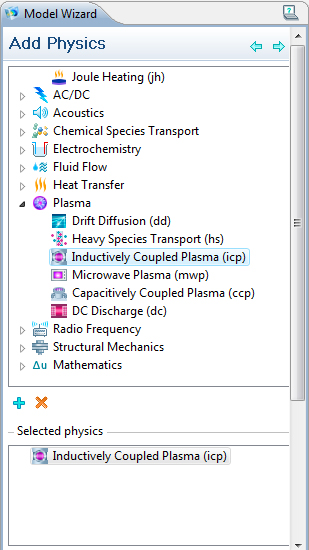
The Plasma Module Model Wizard let users choose the type of plasma to model. This image shows the Inductively Coupled Plasma physics interface selected.
Modeling the interaction between the plasma and an external electrical circuit is an important part of understanding the electrical characteristics of a discharge. The Plasma Module provides tools to add circuit elements directly to a 1D, 2D or 3D model. Alternatively you can import an existing SPICE netlist into the model. The plasma chemistry is specified either by loading in sets of collision cross sections from a file, or by adding reactions and species directly in the user interface.
The module includes a set of fully documented models of:
• Capacitively coupled plasma (CCP)
• Microwave plasma
• DC discharge
• Dielectric barrier discharges(DBD)
• Reactive gas generator
• Thermal plasma
• The Gaseous Electronics Conference (GEC) reference cell
• Boltzmann analysis of swarm data
“The Plasma Module is truly a revolutionary product because it combines the universally acclaimed COMSOL Multiphysics user interface with industrial strength algorithms and numerical methods. The net result is a product with unprecedented ease of use which can handle arbitrarily complicated industrial and academic problems.” concludes Dan Smith.
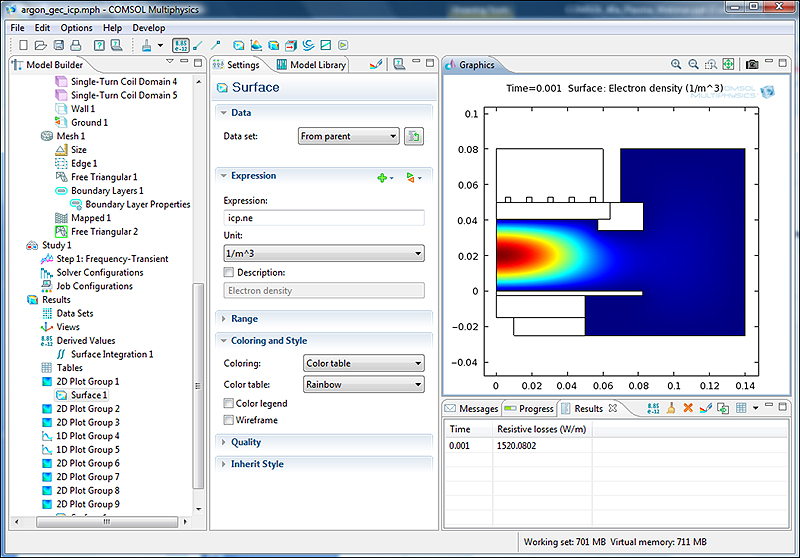
Modeling an Inductively Coupled Plasma for the Gaseous Electronics Conference (GEC) reference cell using the COMSOL Multiphysics Plasma Module. The plot shows the electron density in the reactor for Argon plasma.
Plasma Module Highlights
• Application-specific interfaces for the most common types of plasmas.
• 2-term Boltzmann solver to compute source coefficients and transport properties from cross section data.
• Add and remove reactions, surface reactions and species to create arbitrarily complex plasma chemistries.
• Define reaction sources using cross section data, look-up tables, Arrhenius coefficients, rate constants or Townsend coefficients.
• Automatic computation of tensor transport properties for electrons and plasma conductivity when a static magnetic field is present.
• CHEMKIN file import for species thermodynamic and transport properties.
COMSOL
www.comsol.com
::Design World::
Filed Under: Software • FEA, Software • simulation, ENGINEERING SOFTWARE



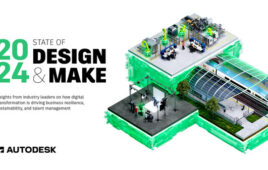
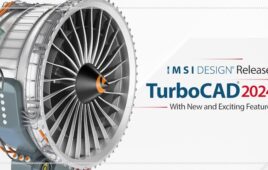
Tell Us What You Think!